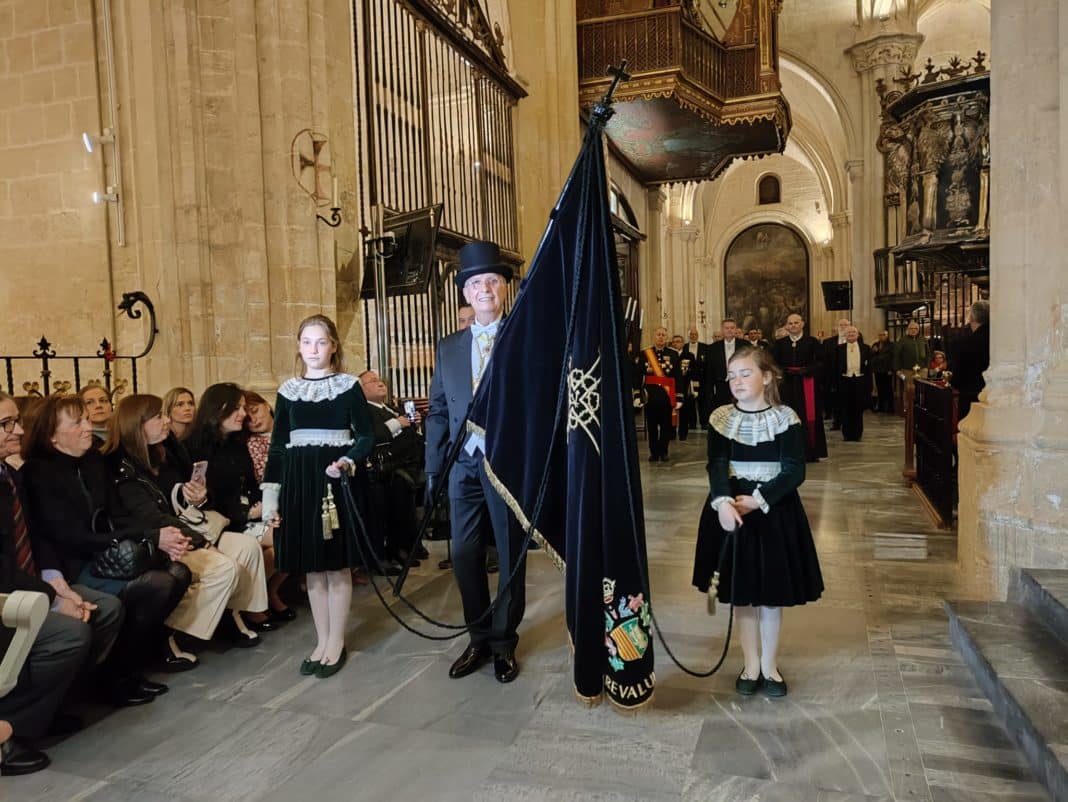Holy Week in Orihuela is one of the most outstanding religious and cultural spectacles in Spain. It was granted the status of International Tourist Interest back in 2010 and has a series of remarkable features that make it unique with the Holy Entombment procession (Holy burial of Christ) on Holy Saturday a highlight of the week, where the Caballero Cubierto (the Covered Knight) is given the privilege of carrying a black banner bearing town’s motto, during the oldest Easter Week procession.
Nominated as an Intangible Cultural Heritage of Humanity, it is possibly the most distinctive procession during Orihuela’s Holy Week, as it represents official mourning, during which the entire local government takes part.

This is the procession that many residents eagerly look forward to every year. The reason is that the world famous statue ‘The triumph of the cross’ also called La Diablesa or the ‘She devil’ (a cross that sits on a globe, flanked by a skeleton to one side, and a devil with breasts, on the other), is carried through the streets, a work of art that dates back to 1696 and is so special, with its deep alchemical representation, that it is extensively featured every year on news bulletins across the whole of Spain.
With sombre respect and reflection, Orihuela silently welcomed the Holy Entombment parade like a painful mantilla, with sadness, but also with hope for the rising of Christ on Easter Sunday, in an experience that was full of faith, devotion, tradition and art.
Men dressed in morning coats and women in black mantilla dresses paraded through the streets and into the Cathedral, with all levels of Oriola society taking part.
This was the only procession organised by the Council, an ancient tradition that has been maintained since the 17th century. To the sounds of drum rolls, horns and solemn hymns, starting at the Church of Saints Justa and Rufina, the celebrants paraded to the Cathedral of the Savior and Saint Mary, led by the Covered Knight, a figure that symbolises all the virtues of which Orihuela feels proud, being the most prominent character of the entire Holy Week, which this year was undertaken by Antonio Martínez-Canales, wearing the characteristic tailcoat with a top hat and carrying the black velvet mourning banner.
Martínez-Canales made the traditional walk through the vaults of the Cathedral with the black banner in hand, until he reached the altar, where the bishop, José Ignacio Munilla, was waiting for him to perform the protocol greeting to the person who holds the highest distinction of Holy Week.

Orihuela Passion Week, despite interruptions caused by the weather, the most recent being Easter Sunday, is a unique experience. Hundreds of years of Spanish history, the visual experience of the bright colours of the robes of the Nazarenes, the spectacular thrones; the smell of incense, the sound of the “twin” trumpets during the day and the Song of the Passion in the pitch dark of night.
But also the experience of honouring the extraordinary works of the great sculptor Francisco Salzillo, among many others, the face of Nuestro Padre Jesus Nazareno, patron of the city, that the message of Jesus Christ brings to us all.
Note:
The Covered Knight of Orihuela is one of the most characteristic appointments of the city. Made annually, this privilege dates back to 1750 and grants the designated person the privilege of not removing their hat inside a church or in front of the monarch.





